LADAKH – TREKKING AND HIKING
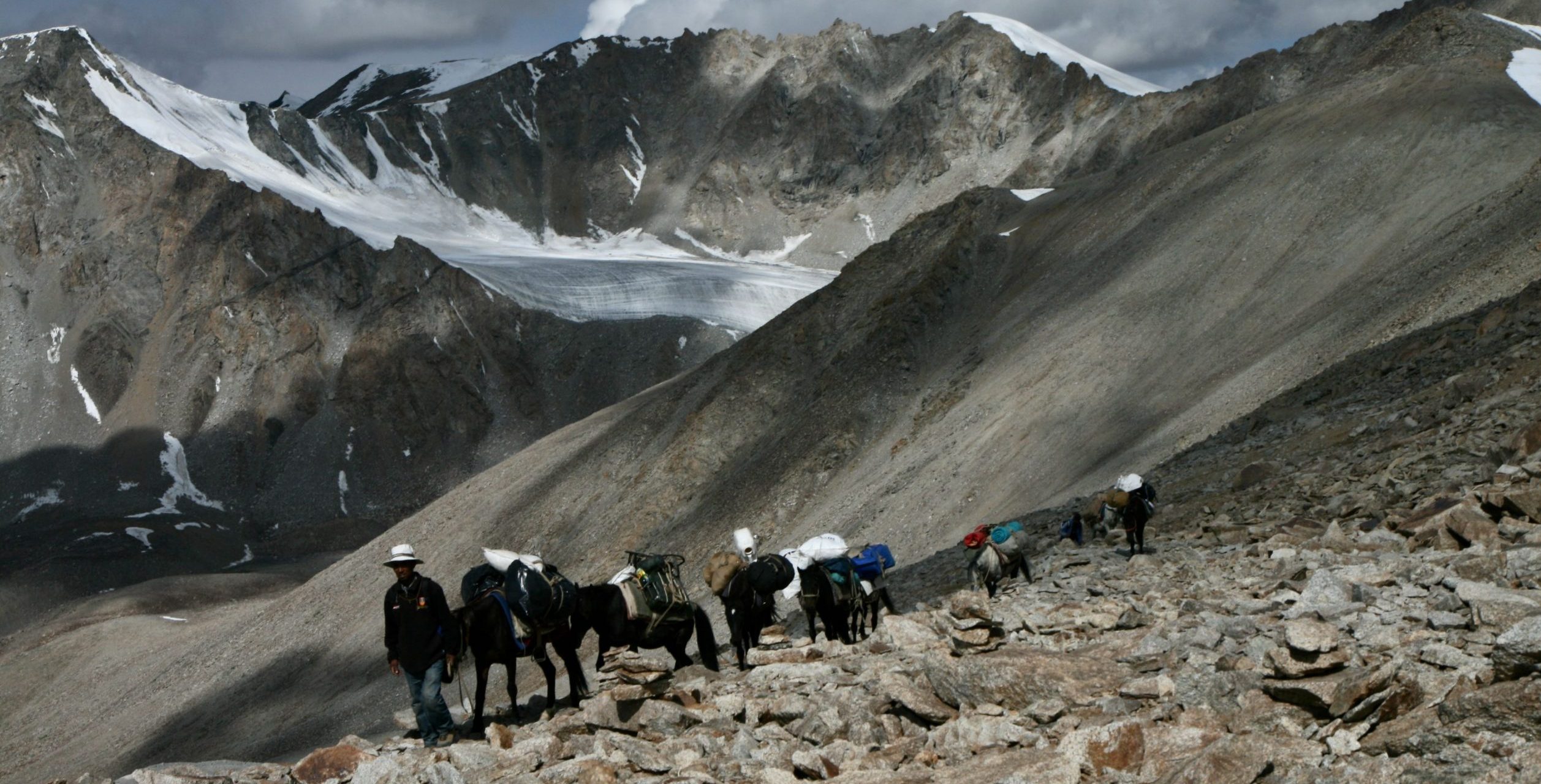
Here we briefly present the trekking areas of Ladakh. For some trekking tours we have created detailed descriptions in PDF format – click on the links. Zanskar is also listed here and does not have its own page. At the bottom is something about the day hikes.
Sham Valley
We call the Sham-Valley in regard as a trekking-area the the region north of the Indus-Valley between Likir and Tingmosgang. There are many villages (Likir, Tarutse, Yangthang, Saspotse, Ulley, Hemis Schukpachen, Ang, Tingmosgang, Tia) with accommodations (especially homestay, but also guesthosues and a few hotels) and being connected with tracks and rarely driven roads. Here are some possibilities of combinations for trekking, but also just stays with day-hikes. The area is not so high (most of the passes are around 4.000 m, just the Karang-la with 4.600 m sticks out) and you get very good in contact with the people. The walking-times can be quite short so that you have enough time for encountering the ladakhi daily life.
One can extend the trek from Tingmosgang to the Dah Hanu Valley up to Skurbuchan.
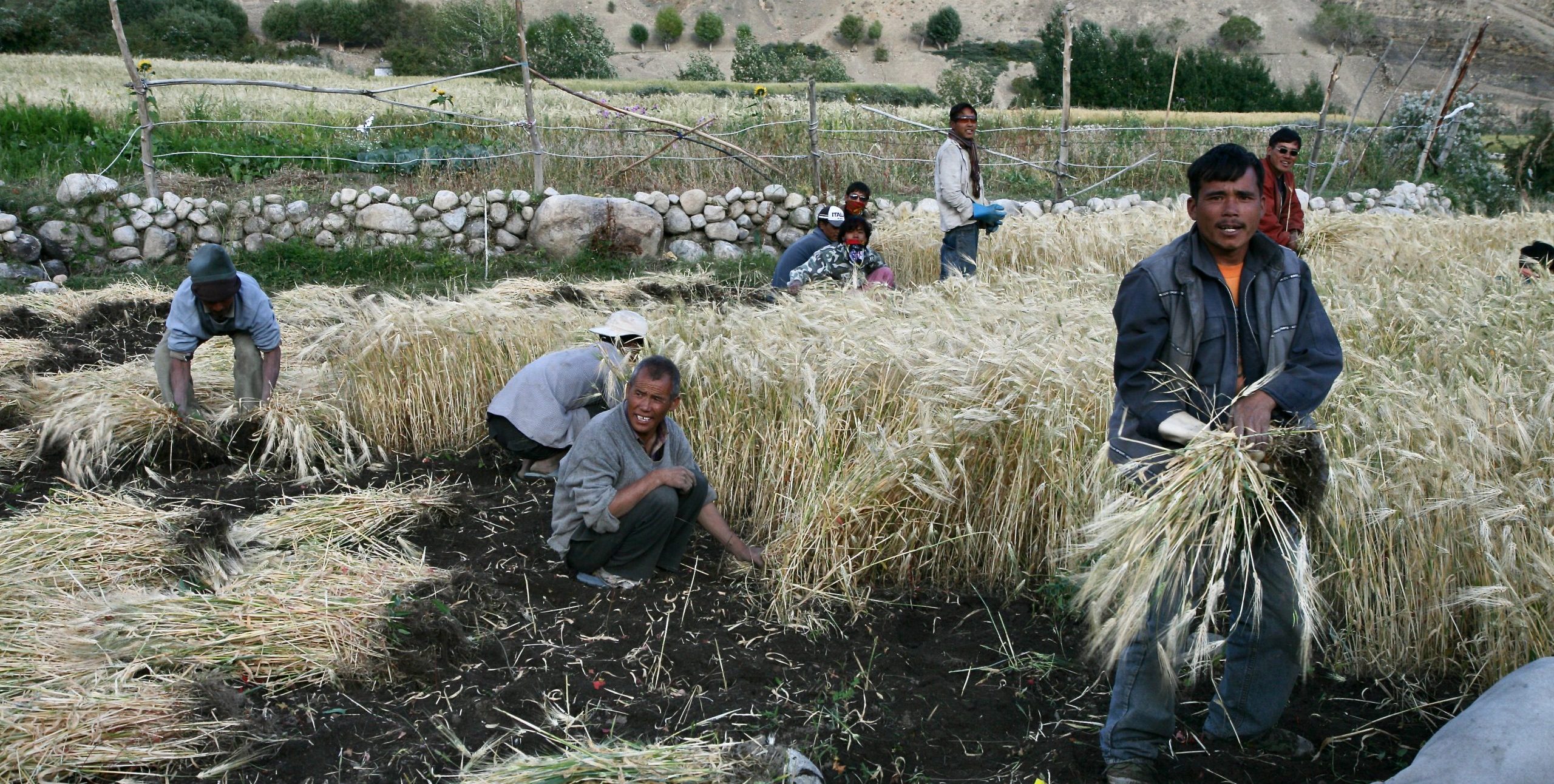
Markha Valley
Directly opposite the capital Leh on the other side of the Indus, the fertile Markha Valley is hidden behind a mountain range. This is considered one of the first and now by far the most popular and heavily frequented trekking areas in Ladakh. A short journey to and from the valley takes you into a scenically varied area with villages, high passes and the beautiful Nimaling high valley. However, there is now a road from Chilling to Hankar. It is not very busy – but the trekking simply feels different despite the same magnificent landscape.
There are the following trekking options:
– Zinchen-Stok – 3 days
– Zinchen-Chilling – 4 days
– Chilling-Shang Sumdo – 5 days
– Zinchen-Shang Sumdo – 8 days
You can also plan to climb the mountains Stok Kangri, Kang Yazee and/or Dzo Jongo. We also mention here the Shang-Sumdo route to Rumbak, which runs parallel to the Markha Valley on the other side at the Indus Valley in 4 days. You can of course combine it with the Markha trek or start from Hankar and then walk to Rumbak. There are numerous descriptions of the routes on the Internet.
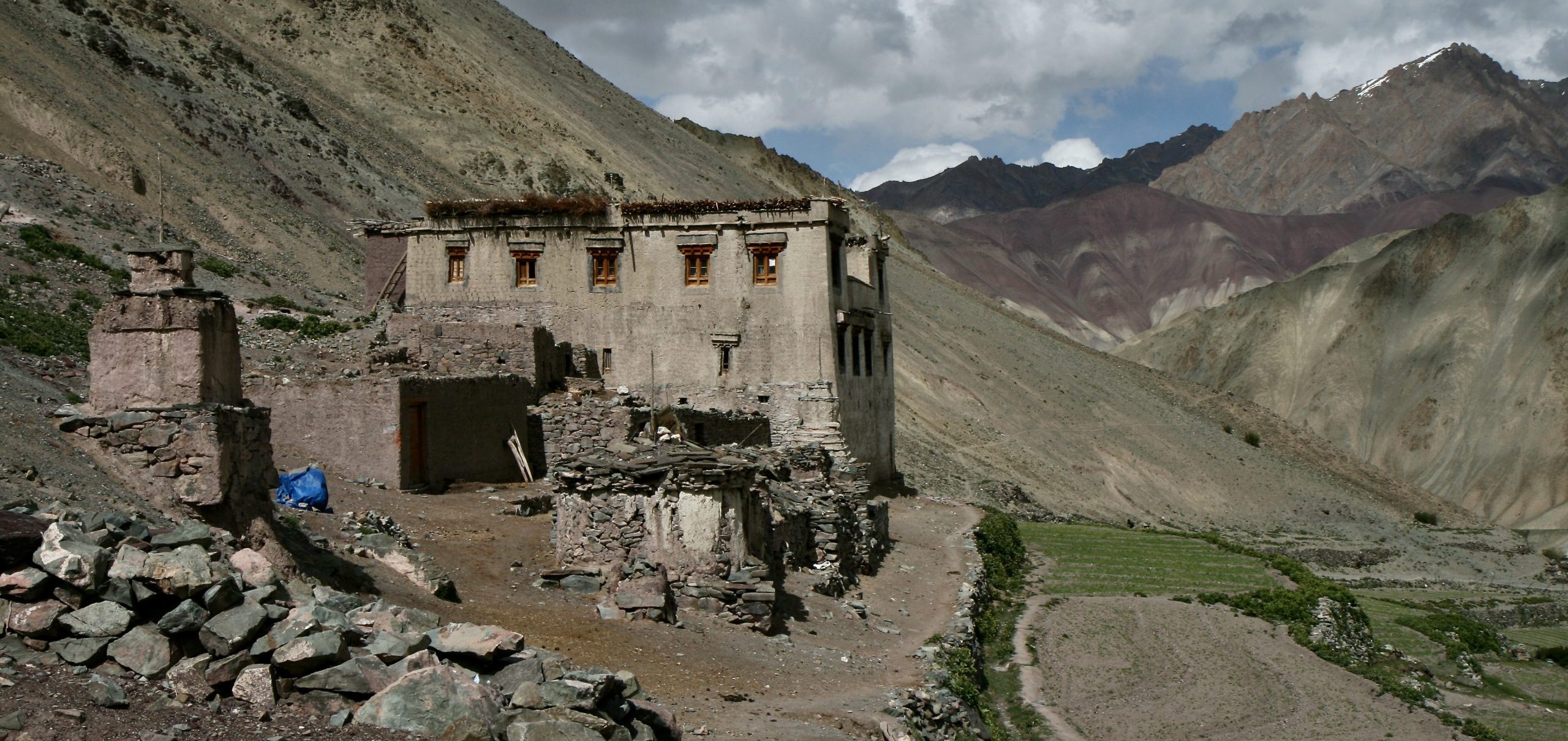
Nubra Valley
Nubra Valley is separated from the Indus Valley by a high mountain range. Nearly from every village in the Indus Valley you can hike over a pass with a small snowfield in 5-6 days into the Nubravalley (or vice versa – usually the start from the Indus Valley is a bit higher and the ascent more steep compared to the other side). Also there is a connection from the Nubra Valley to the road towards Pangong lake. These treks are without varieties, but can be done one after the other or combined.
From west to east:
– Tia-Parchathang – 6 days
– Saspotse-Skuru – 5-6 days
– Phiyang-Hundar – 5 days
– Sabu-Diggar – 3 days (or better Leh-Sabu-Diggar – 4 days)
– Kyema or Tangyar-Durbuk – 3-4 days
Both of the last treks can be nicely combined (Leh-Sabu-Diggar-Durbuk), either with a visit of Nubra Valley in between or as a nonstop trekking-trip of 8 days.
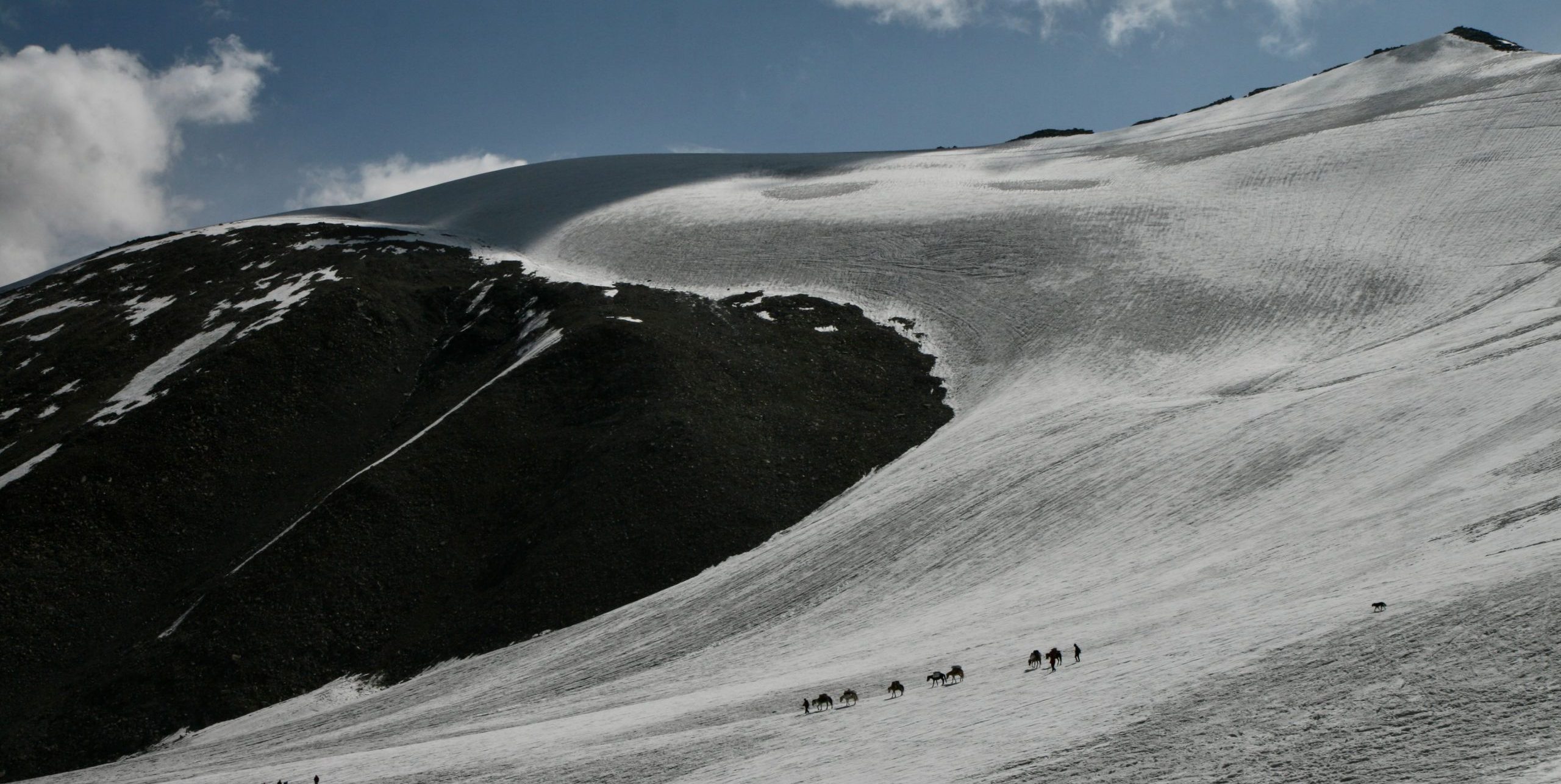
South of Indus
In this huge area there are countless pissibilities of combined longer or shorter trips. Some are really popular (Lamayuru-Chilling), others are visited rarely. It is also possible to trek the whole distance from Shergol via Lamayuru, Markha-Valley up to Changthang in approx. 30 days.
Here are some possibilities:
– Shergol-Wanla – 8 days
– Lamayuru-Chilling – 5 days
– Kanji-Rangdum – 3 days
– Hanupatta-Kanji-Rangdum – 6 days

Zanskar
You usually trek out or in or through Zanskar. The classic route from Darcha to Lamayuru used to take 21 days. There is now a continuous road and there are no longer many villages without a connection. You can either hike virtually next door or look for a route off the beaten track. Here are some route ideas:
– Anmo-Sarchu – 6 days
– Anmo-Brandy Nalla – 9 days
– Anmo-Shankar-Reru – 11 days (glaciertrek)
– Zangla-Anmo – 10 days
– Stongde-Ichar – 4 days
– Padumtal-Homestaytrek – 2 days
– Anmo-Phuktal-Darcha – 6 days
– Stongde-Phuktal-Anmo – 6-7 days
– Rinam-Rangdum – 8 days
– Zangla-Hemis – 8-9 days
– Dzongkhul-Kishtwar – 6 days
– Bardan-Miyar Valley – 7 days (glaciertrek)
There are also other routes waiting here in the large mountain network, and you could also hike a very long way to the Changthang area (or to Spiti).
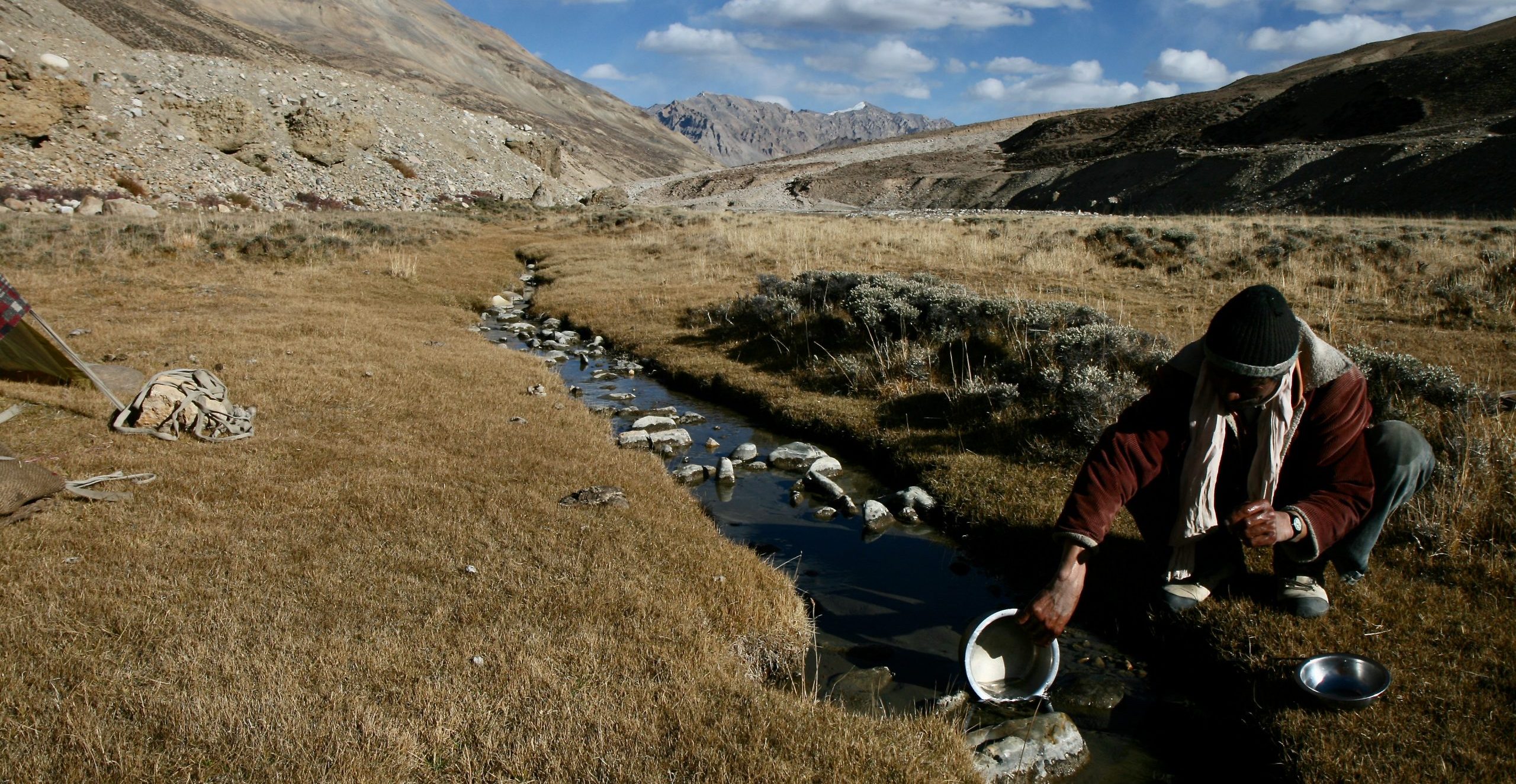
Changthang
The Changthang is a huge trekking area with countless possibilities, but one snag: you have to be very well acclimatised as it is nowhere below 4.2000 m. Starting at the Pangong lake area there are different possibilities to reach the Indus, but the passes are very high and not much discovered by us. A nowadays very popular trek is Rumtse-Tsomoriri, going along the Tsokar lake and can be stopped there, too.
Here are some possibilities:
– Rumtse-Tsomoriri – 8 days
– Chumathang-Yayatso – 4-5 days
– Chalungdo-Niddar – 3 days
– Noma/Pang-Korzok – 4-5 days
– Martselang-Tsomoriri – 12 days
– Tsomoriri-Kibber (Spiti) – 8 days
– Debring-Niddar – 11 days
– Korzok – Tingting Khurd – 8 days
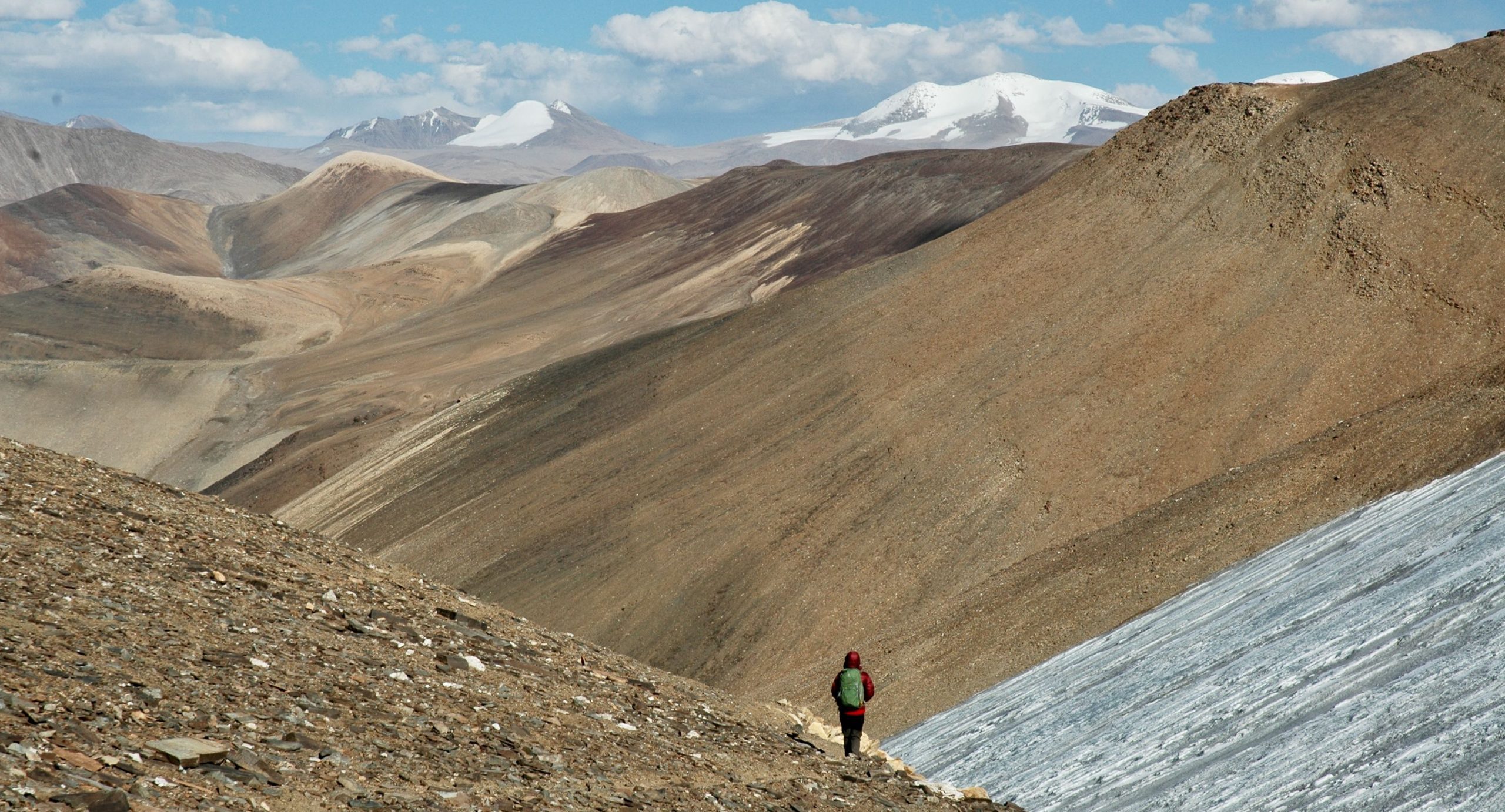
Day Hikes
The mountain world of Ladakh is full of opportunities for day hikes. There are rather flat routes of about 45 minutes (e.g. Nyerma-Thikse) up to 6-hour day tours. Most tours are between 2 and 4 hours long – although of course you always need longer due to long breaks to enjoy the scenery. A packed lunch is usually included, as restaurants are rarely available. This gives you a lot of independence in terms of time planning. Some routes are in completely uninhabited areas, others lead through or to villages. You can prepare well for a trek with day hikes or even fill an entire trip with them if you don’t want to tackle a longer trek. Let us suggest beautiful tours when planning your trip!
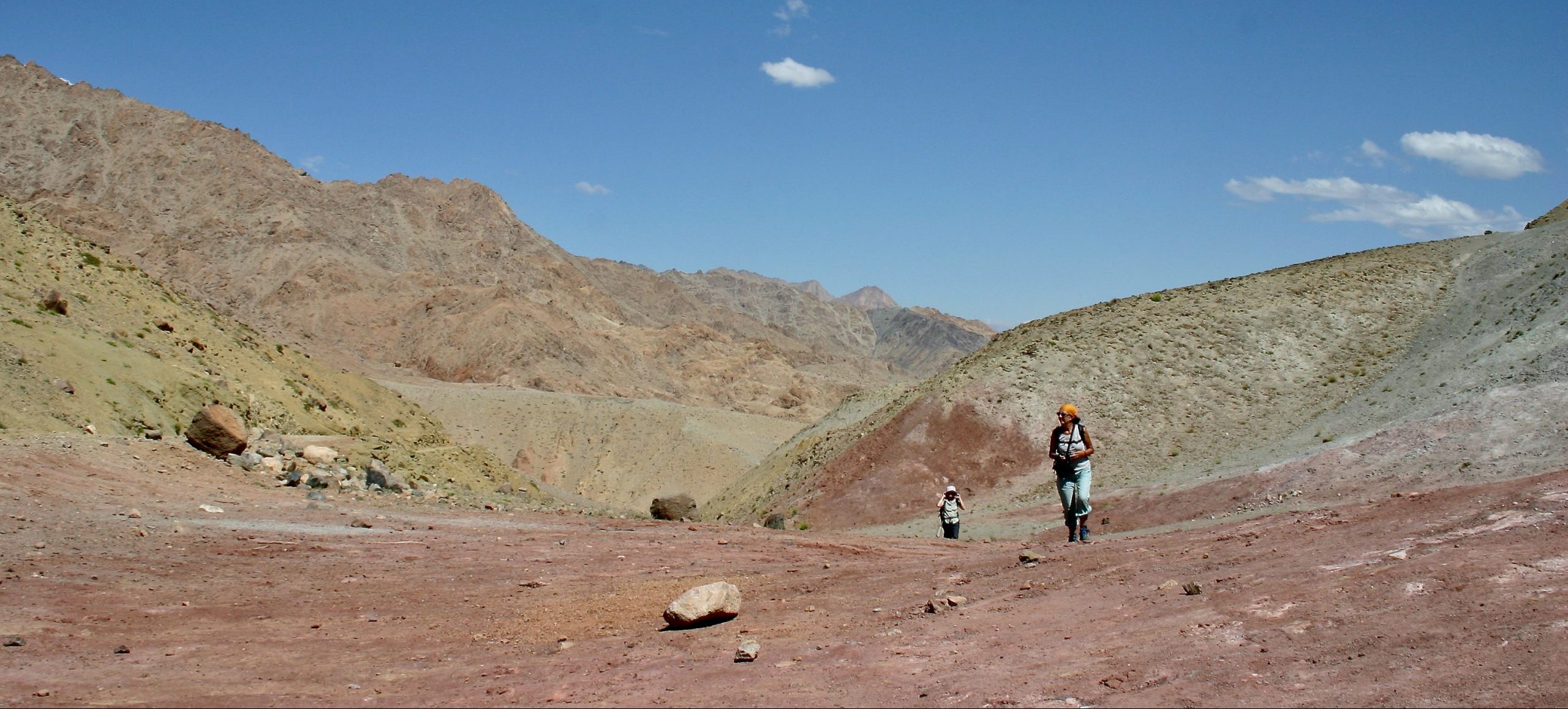
A few words about Ecology
If you go trekking in Ladakh and Zanskar, you will soon realise that there is a rubbish problem. The usual campsites in particular are often littered with old tin cans and plastic rubbish. There is also a lack of toilet facilities at some places, so there is also a problem in this respect. Yangla Tours therefore considers a few points to avoid problems as a matter of course:
- no tinned food on treks lasting 5 days or less
- take more local products with you (e.g. apricot jam instead of Indian products, apricot kernels, dried apricots and apples as well as roasted barley to nibble on, mint tea)
- Take non-flammable rubbish back to Leh
- Bring a toilet tent with a spade
- to save fuel, we recommend taking Micropur or water filters with you instead of boiling water
- Clean-up treks at the end of the season (you can take part at a special price, please enquire about the offers)
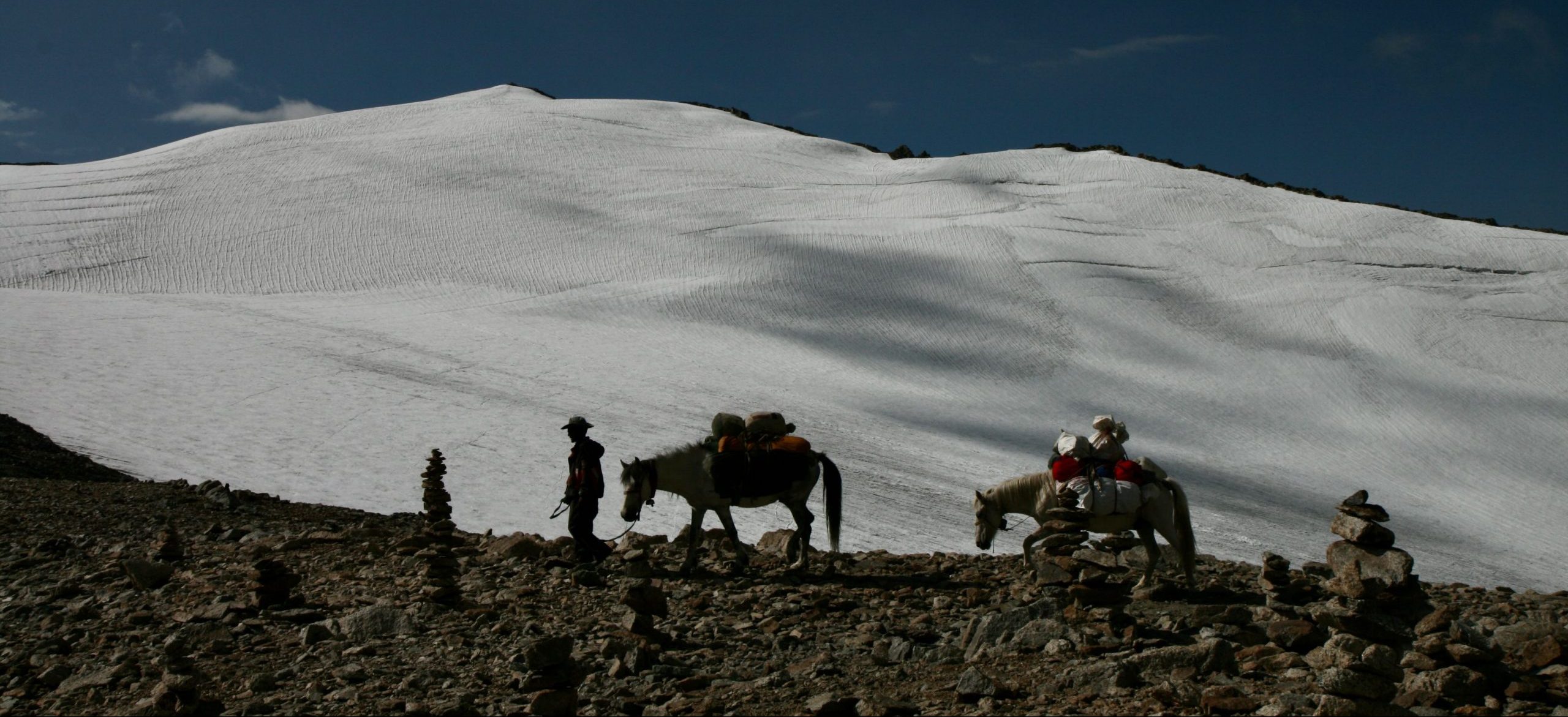
Road Construction and Water
Road construction is constantly changing the trekking possibilities, as are the drying up of springs, which are essential for certain camping opportunities. We endeavour to the best of our knowledge and belief to be up to date here – but the area is huge and the information may be out of date. If you enquire about routes that are not often travelled, we will of course check the conditions carefully in advance.
